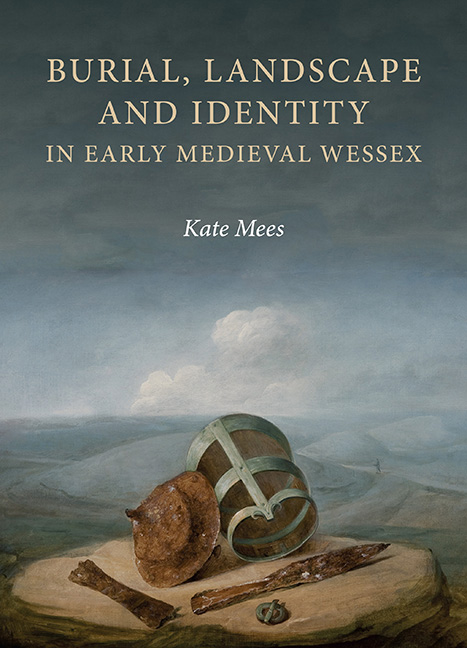Book contents
- Frontmatter
- Dedication
- Contents
- List of Illustrations
- Acknowledgements
- List of Abbreviations
- Note on Period Terminology and Other Definitions
- Introduction: Perspectives, Approaches and Context
- 1 Monument Reuse and the Inherited Landscape
- 2 Topography and Ritual Life
- 3 ‘Britons and Saxons’?
- 4 Land Use, Territoriality and Social Change
- 5 The Church and the Funerary Landscape
- Conclusions
- Appendix: Gazetteer of burial sites in the study area, c. AD 450–850
- Bibliography
- Index
- Anglo-Saxon Studies
- Frontmatter
- Dedication
- Contents
- List of Illustrations
- Acknowledgements
- List of Abbreviations
- Note on Period Terminology and Other Definitions
- Introduction: Perspectives, Approaches and Context
- 1 Monument Reuse and the Inherited Landscape
- 2 Topography and Ritual Life
- 3 ‘Britons and Saxons’?
- 4 Land Use, Territoriality and Social Change
- 5 The Church and the Funerary Landscape
- Conclusions
- Appendix: Gazetteer of burial sites in the study area, c. AD 450–850
- Bibliography
- Index
- Anglo-Saxon Studies
Summary
Prominent and symbolically charged topographic and human-altered features acted as nodal points in the cognitive landscape of early medieval Wessex. Central places of long-standing significance were used and reused, recurrently ascribed new layers of meaning through collective acts of funerary memorialisation and ritual performance. The activity evidenced in these locations suggests a deep familiarity with the vocabulary of the landscape and an enduring awareness of the potency of particular features. In some cases, though, seemingly timeless ‘ancestral’ ties to the landscape are likely have been overstated, or indeed invented, whether by ascendant elites as part of strategies to strengthen authority or incoming groups seeking to assert claims to territory. What we refer to as Early Anglo-Saxon culture, most obviously manifested in the archaeological record in distinctive burial rites typified by the deposition of ‘Germanic’ grave-goods, was long perceived as having been transplanted wholesale from the continent: an invasive identity in opposition to indigenous customs and traditions. In that context, the prehistoric and Roman features appropriated by ‘Anglo-Saxon’ communities were seen as having been indirectly inherited from the native population that they replaced, in a landscape that was already populated and deeply inscribed. Yet it is no longer considered realistic that significant population displacement occurred, or even that the majority of the inhabitants of lowland Britain by the end of the fifth century were continental immigrants. Nevertheless, this was a period in which important processes of identity formation and social change were transpiring, with competition between groups manifested in the fission and fusion of polities at a local, regional and ultimately national scale. Comparable developments were taking place throughout western Europe in the centuries following the retreat of the Roman Empire. The insecurities and resultant affirmations of group identity as well as the patterns of mutual interaction that these transformations precipitated can, arguably, be recognised in the burial record.
The previous two chapters have revealed the extent of variation, as well as many commonalities and broad trends, within the mortuary practices of early medieval Wessex. The present chapter explores the evidence further, and asks how some of these variations at a trans-regional and sub-regional level might be explained. Did communities in different areas of Wessex have clearly defined cultural allegiances that they expressed and signalled through burial, and, if so, how did various groups interact with each other?
- Type
- Chapter
- Information
- Burial, Landscape and Identity in Early Medieval Wessex , pp. 99 - 146Publisher: Boydell & BrewerPrint publication year: 2019



